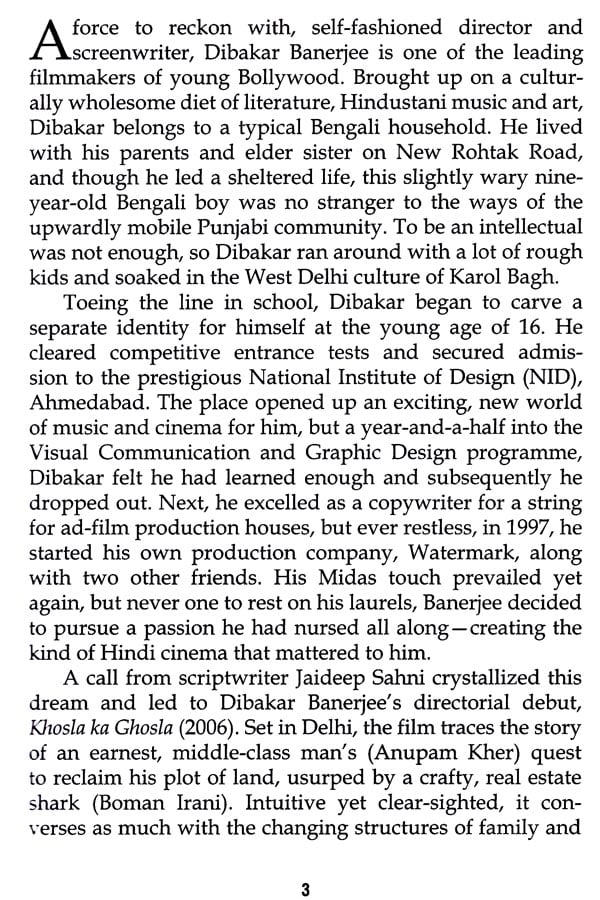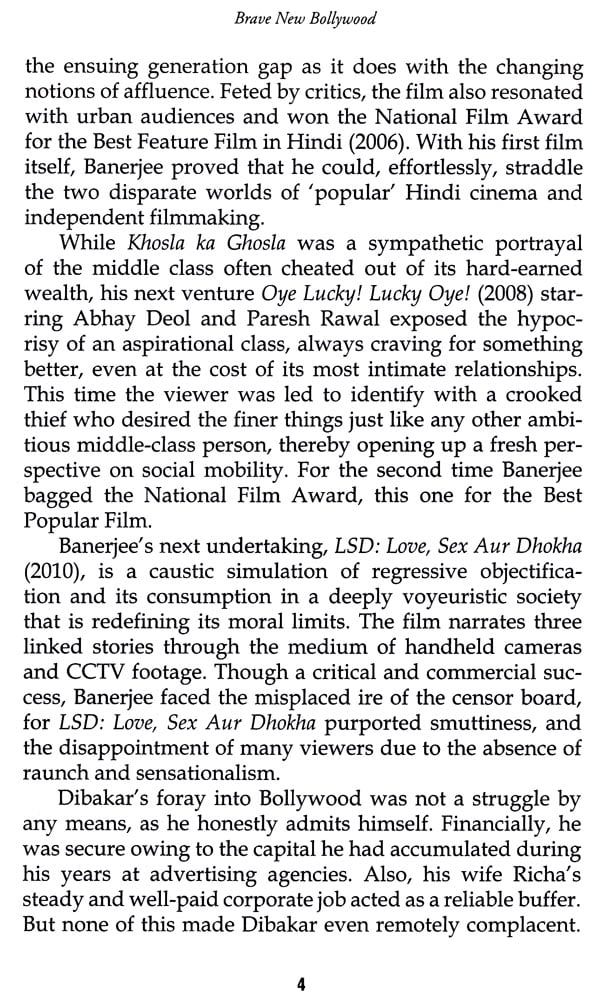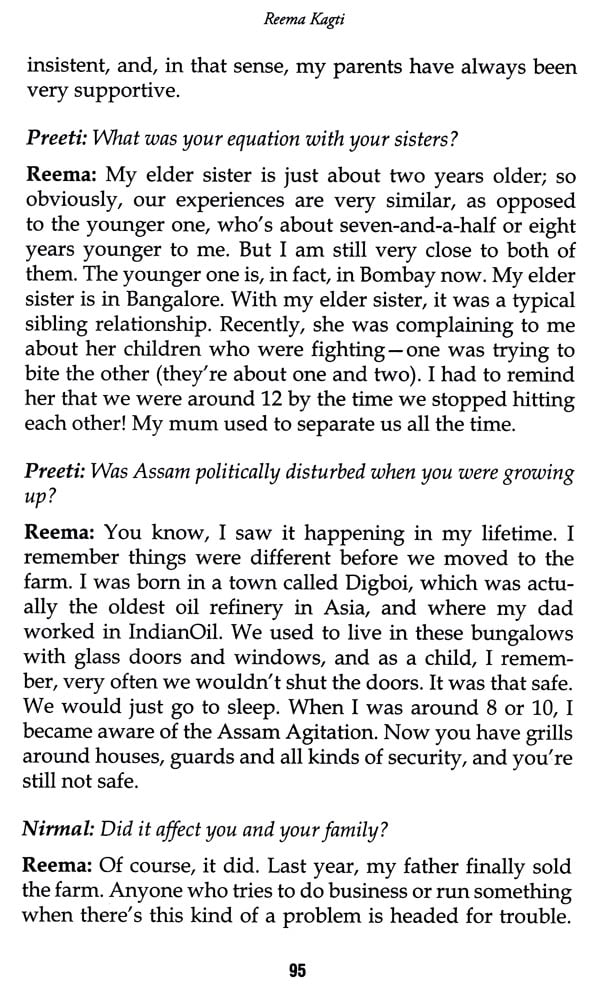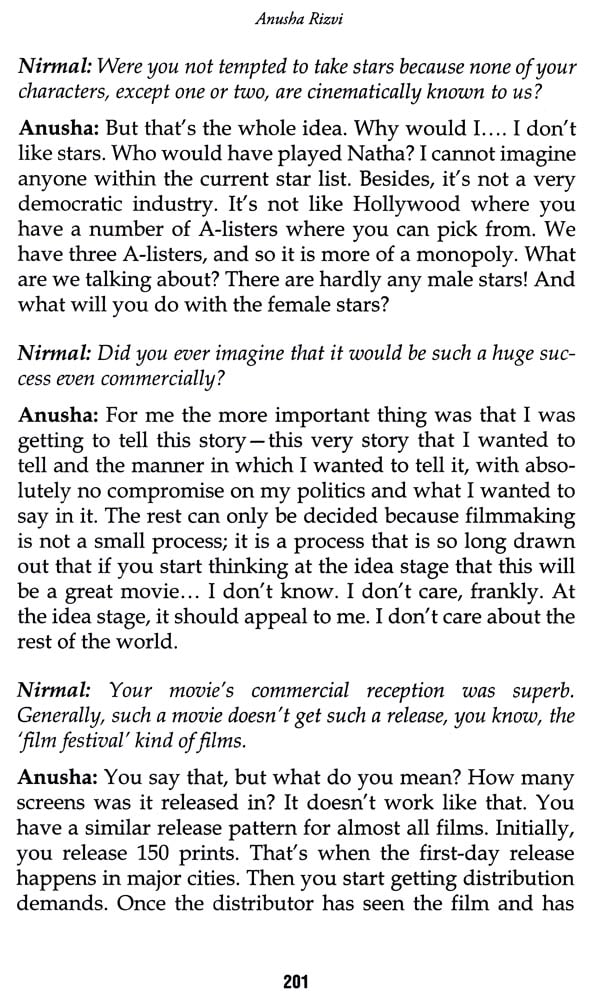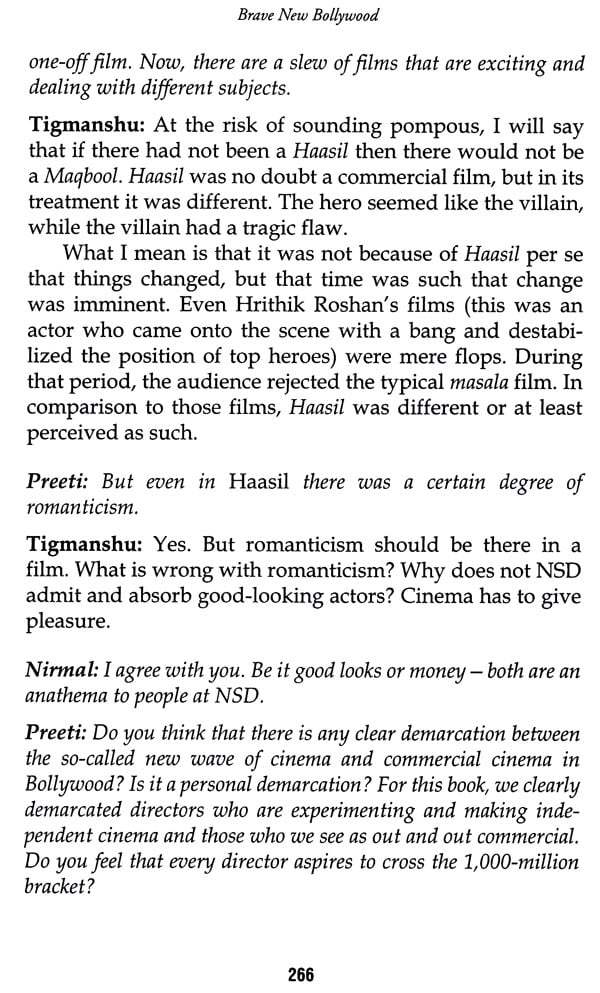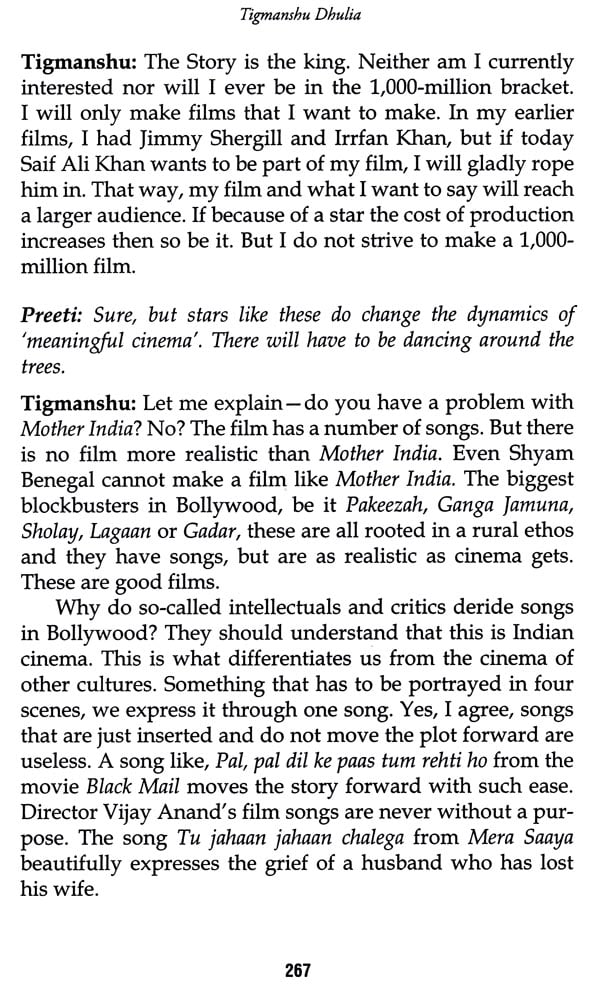
Brave New Bollywood (In Conversation with Contemporary Hindi Filmmakers)
Book Specification
| Item Code: | NAR856 |
| Author: | Nirmal Kumar and Preeti Chaturvedi |
| Publisher: | Sage Publications India Pvt. Ltd. |
| Language: | English |
| Edition: | 2015 |
| ISBN: | 9789351500315 |
| Pages: | 294 (15 B/W Illustrations) |
| Cover: | HARDCOVER |
| Other Details | 9.00 X 6.00 inch |
| Weight | 460 gm |
Book Description
These are interesting times in the history of Indian cinema, particularly because the established aesthetic conventions and modes of production of the Hindi film industry are being challenged, as are the boundaries between what is alternative and what is mainstream. This book is an attempt to contextualize the upsurge in this form of cinema in Bollywood/Hindi film industry.
It also aims to promote an academic enquiry into the works of these filmmakers, their religious beliefs, social moorings, cinematic influences, attitudes towards filmmaking and experiences of making movies. It will be an important reading for serious students of South Asian studies, film studies and media studies as well as the general reader who has an interest in cinema.
Nirmal Kumar is Associate Professor of History at Sri Venkateswara College, University of Delhi. He has been working on 18th century Rajasthan and also on Hindi films. He has co-edited a book titled Filming the Line of Control (2008), while another, Essays in History of Medieval Delhi, is in press.
Preeti Chaturvedi is a senior marketing professional and writes on media and cultural studies. She is a Delhi University Topper in English Literature from Miranda House with an Executive Diploma in Sales and Marketing from the Indian Institute of Management (IIM), Calcutta. She has co-authored India's first book on blogging, Corporate Blogging in India (2009).
These are interesting times in the history of Indian cinema, 1 particularly because the established aesthetic conventions and modes of production of the Hindi film industry are being challenged as are the boundaries between what is alternative and mainstream. A new idiom is emerging -which, to borrow the phrase from Dibakar Banerjee, is that of anti-dumb cinema. The attempt of this book is to contextualize the upsurge in a certain form of cinema in Bollywood, which is both alternative yet mainstream, through an understanding of the sociological underpinnings of the men and women who make these movies.
The defining characteristic of these movies is their uncompromising story, which creates a world of fallible yet believable characters. The audience, however, remains the Indian middle class - a viable synergy since the financial models of these movies make sense in a multiplex ecosphere, which again are increasingly becoming the new middle-class hang outs. It is difficult to say whether the genre of meaningful cinema is coming into its own, or the very realm of what we hitherto called 'mainstream' is expanding to become more inclusive.
Historical Overview
The cinema of new sensibility builds upon the sensibility of the 'experimental cinema' with its many historical precedents in the form of the New Cinema Movement, which started in the late sixties. Although there was no possibility of a significant popular success of experimental films at that time, their continued production under the supportive aegis of the government had long-term consequences on the Hindi mainstream industry.
Ravi Vasudevan observes that from the sixties onwards, parallel cinema emerged as the object of middle-class spectatorship, especially in the wake of the 'massification' of the commercial form into an encompassing and alienating package of spectacle, action and titillation (Vasudevan, 2000).
Right from the seventies, there has been the possibility of a substantial segment of the middle-class audience drifting towards an alternative cultural space (Prasad, 2001). Much of the parallel cinema of the seventies and eighties was made in Hindi, although it is linked to other art cinemas in many Indian languages, particularly Bengali and Malayalam. This cinema was instrumental in generating a spate of writing by filmmakers about the movement of which they themselves were a part (Dwyer & Pinto, 2011).
It has also been argued by scholars that there is a Middle Cinema, one that literally stands between popular and the elite art cinema. It is aimed at a large section of the middle-class audience, which is a product of the urban boom. Although this Middle Cinema tackles important issues, it is the treatment that differentiates this genre from both popular and world cinema (Gokulsing & Dissayanaker, 1998). This cinema is having a second lease of life with the anti-dumb cinema of our times - this time, though, in a more commercially viable manner. This cinema is characterized by a new social language. Gender roles are questioned. Social structure are laid bare in all their hypocrisies. Moreover, movies such as LSD: love, sex aur Dhokha and luck by chance have pushed the envelope further by Turing the gaze inwards, critiquing the whole concept of media, movies and voyeurism per se.

